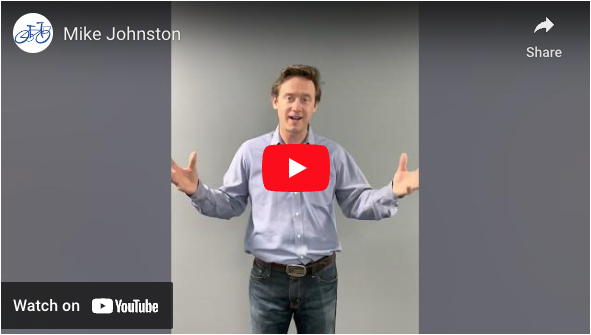Allies Not Enemies
One of the organizing ideas behind VAMOS is that to rapidly build a Complete Bike Network For Everyone, we have to align groups of people who often disagree. Otherwise, every additional mile of infrastructure is a war and we end up with a hackish, disconnected network and 10-year development cycles.
During the municipal election, Denver7 anchor Brian Sanders said: “It’s not often candidates agree on something, but more than two-thirds of the ones running for Denver Mayor support VAMOS.”
Progressive candidates like Lisa Calderon, Ean Tafoya, and Councilwoman-Elect Sarah Parady made VAMOS part of their campaign platforms.
As did Councilman Kevin Flynn, who has a history of opposing bike infrastructure.
So did our next mayor, Mike Johnston. All told, 12 mayoral candidates and 25 council candidates made VAMOS part of their campaign platforms.
VAMOS attempts to create a Venn diagram that solves the needs of multiple groups who often don’t agree about bike infrastructure.
Our approach is to understand people’s problems and then find the space where there’s overlap, for example:
This alignment can unblock the path to the rapid change we so urgently need: Vision Zero is going in the wrong direction, every day dawns with an air quality alert, and July 4th was the hottest day in 125,000 years.
In Denver, we’re aligned in our desire to confront these issues. We voted overwhelmingly to tax ourselves to fight climate change. But policy and implementation aren’t the same. These shared objectives remain elusive because the standard approach to implementation often creates misalignment and gridlock.
When the Venn diagram circles don’t overlap, every change and every mile of new infrastructure is a pitted battle. It's one of the main reasons we can't "just implement the damn plans.”
The latest front in the war, the 1-mile 7th Ave Neighborhood Bikeway — aka the "Land of a Thousand Plastic Posts" — has spawned public meetings, angry flyers, nastygrams, and a petition.
The protected bike lane on Broadway has taken a decade, costs $12 million, and is an expansion of a demonstration project that no one uses. (The conventional wisdom is that people don't use it because it doesn’t connect to anything, but it does intersect with the Bayaud Neighborhood Bikeway, creating a seemingly decent way for westbound riders to access the commerce on Broadway.)
And as people remind us constantly, with the death of the Washington and Clarkson protected bike lanes, there’s still no formal north-south route connecting Five Points, Cap Hill, Wash Park, and Platt Park. (Though our ENTRANCE route does the trick pretty well.)
On the flip side, Shared Streets, a program the City invented and the tool for creating VAMOS, showed us how to align the Venn diagram circles.
The City reports that 85% of survey respondents, many of whom lived along the routes during the pandemic, want Shared Streets. The path forward should be to build on what works and aligns interests.















